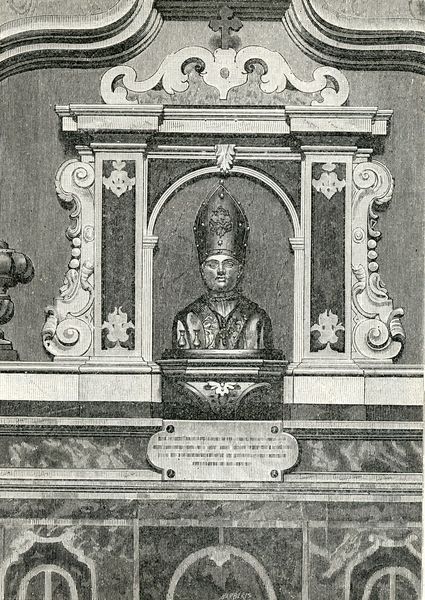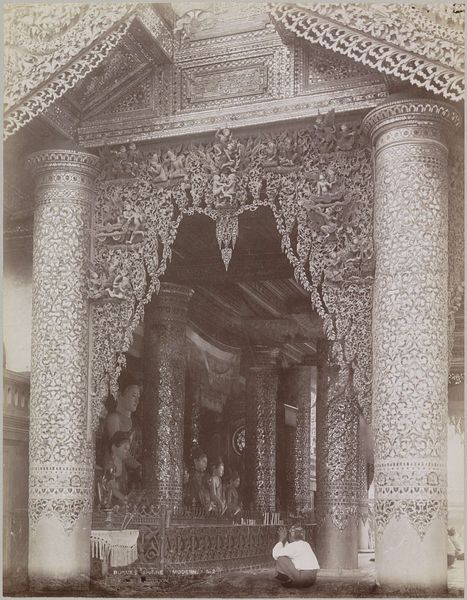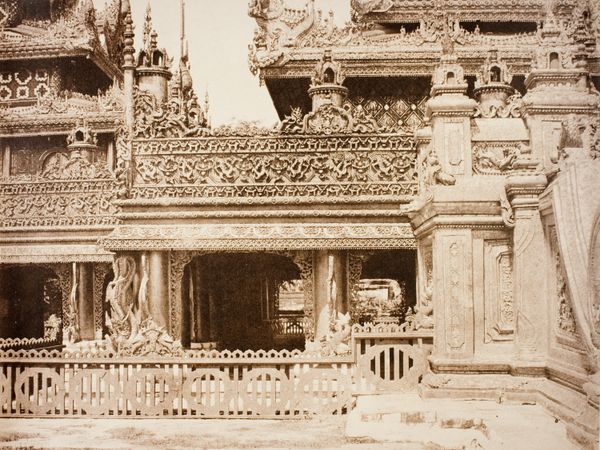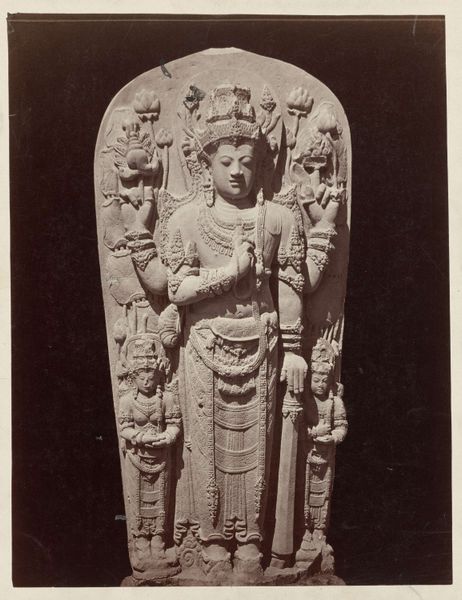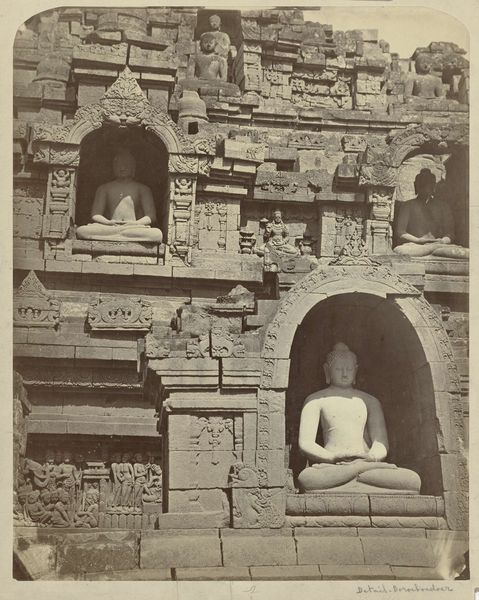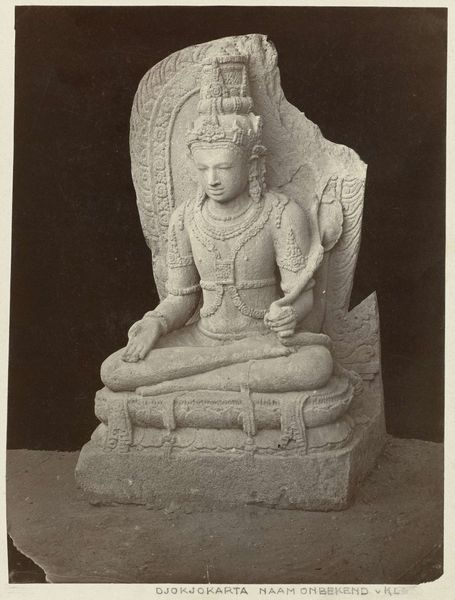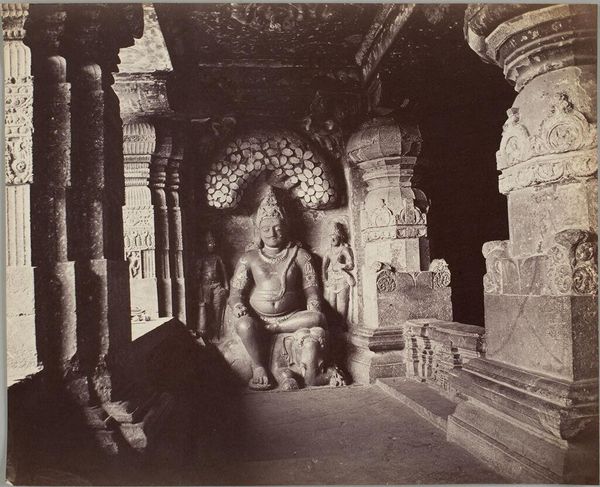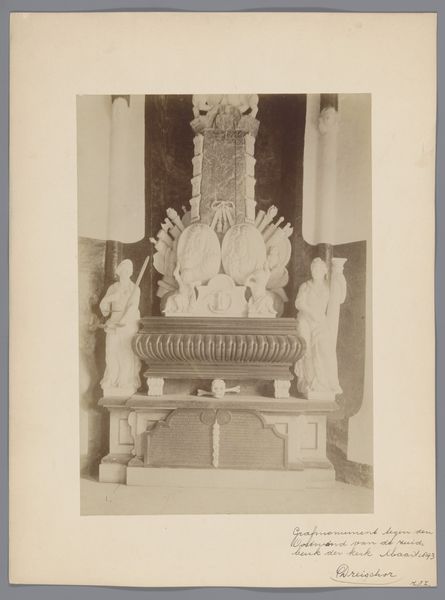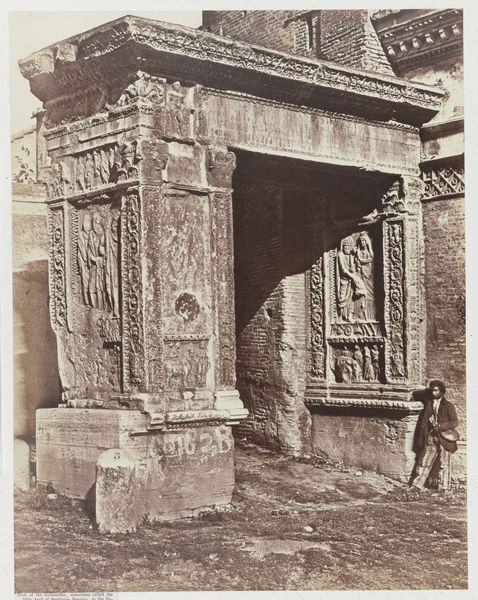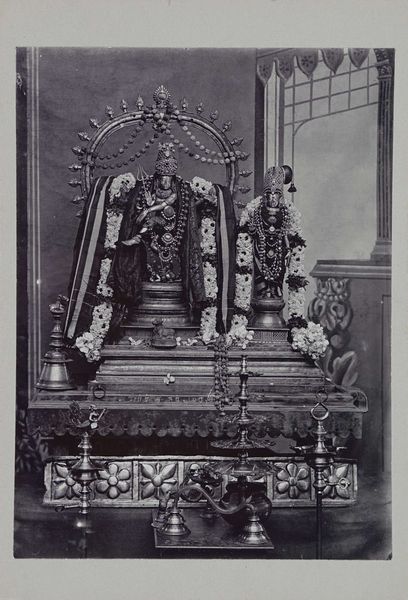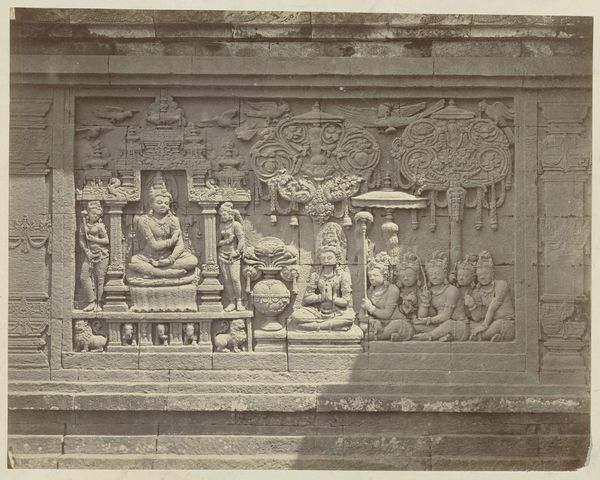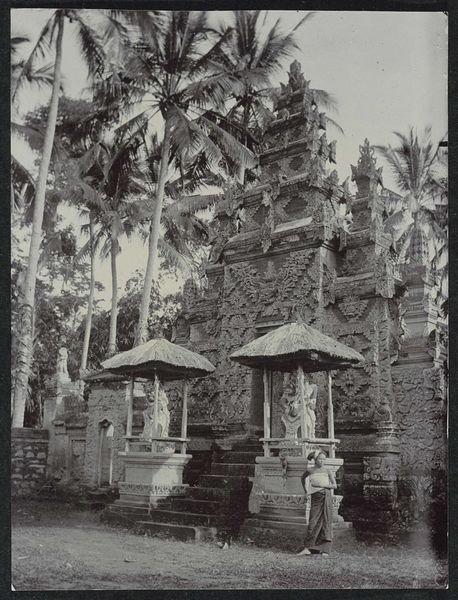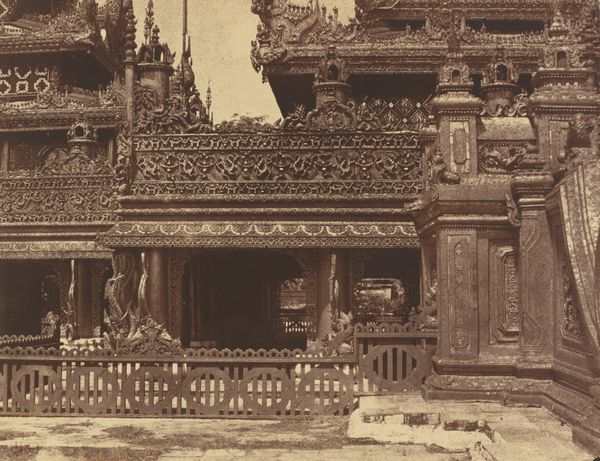
photography
#
portrait
#
asian-art
#
photography
Dimensions: height 258 mm, width 202 mm, height 329 mm, width 243 mm
Copyright: Rijks Museum: Open Domain
Curator: Looking at P. Klier’s “Boeddhabeeld in nis, Rangoon,” dating from around 1895 to 1915, what strikes you? Editor: An overwhelming sense of serenity. The central figure, framed within the alcove, immediately draws the eye. It's interesting how the artist uses ornate architecture and mythical guardians to convey reverence for this icon. Curator: Indeed. The photograph is quite masterful in its play of light and shadow. The statue's surface seems almost luminous, contrasted against the darker recesses of the niche. It adds to the feeling of peace that radiates from it. We also should consider that the architecture surrounding the Buddha in its design utilizes visual hierarchies to communicate an elevated status. Editor: I agree, the details are very impactful, but let's think more deeply about Rangoon's context. Consider the colonial pressures exerted on Southeast Asia during this period. This image could be viewed as an act of cultural preservation, or a visual assertion of identity and continuity in the face of encroaching Western influence. What do we know of Klier? Curator: Unfortunately, our records are limited, and this only invites more investigation. What is known is that the arrangement of lines draws us inward, compelling a focused, contemplative gaze that is central to traditional meditation practices. Editor: It makes me wonder about the intended audience of this image. Was it aimed at Western audiences, inviting them to see the wonders of the East, or did it speak to those within Rangoon to instill the importance of continuing religious practices? I am wondering to what degree that visual language impacted perceptions both internal and external. Curator: These historical questions are crucial when we want to better interpret such a visually captivating artwork. Regardless of the original goal, the careful control of tonal variations certainly gives form and volume, rendering all of these decorations so tactually vivid in this work of photography. Editor: Looking at this piece in isolation would rob the contemporary viewer of the context of how colonial expansion impacted art production of this kind. Curator: Perhaps this close observation has shed light on previously obscured, even unseen meanings that exist within the picture frame. Editor: For me, this exercise highlighted just how inseparable an artwork is from the era, social issues, and forces surrounding it.
Comments
No comments
Be the first to comment and join the conversation on the ultimate creative platform.
